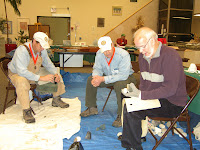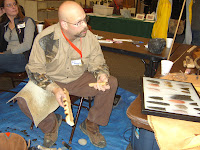
The Colden Mansion Ruins are located in the Town of Montgomery, New York, USA, along NY 17K, at the intersection of Stone Castle Road and Route 17K. The stone walls and foundations, still visible in the woods just off the road, are all that still stands from the house built in 1767 by Cadwallader Colden Jr., son of Cadwallader Colden ( February 7, 1688 – September 20, 1776 ) was a physician, farmer, surveyor, botanist, and a lieutenant governor for the Province of New York. <http://en.wikipedia.org/wiki/Colden_Mansion_Ruins>
------
To All Interested in the Colden Mansion Ruins Heritage Park project -
GREAT NEWS! On Thursday, November 13th, the Town of Montgomery Town Board approved the expenditure of up to $125,000 for the first phase of the stabilization of the Colden Mansion ruins. This is a tremendous step towards preserving this historic site and the development of a heritage park. It is now time to get to work to define the scope of work for our consultants from Stephen Tilly Architect, so that they may develop the necessary bidding documents.
A work session has been scheduled for Monday, December 1st, at 7:00 PM in the Town Board room (2nd Floor) of Town of Montgomery Town Hall at 110 Bracken Road. Representatives from Stephen Tilly Architect will be there to work with us as we determine how we want to approach the following issues: (1) bracing the entire structure; (2) bracing rough openings (doors, windows, chimneys); and (3) capping the upper walls. The goal is for the team from Stephen Tilly Architect to leave this work session with directives for developing the bid documents for the solutions we choose. As you can understand, YOUR INPUT IS VITAL FOR THIS INITIAL PHASE OF THE EMERGENCY STABILIZATION.
Marion Brown has been in contact with an arborist and will bring us up to date on the issue of tree removal at the site. Also, I will present some information from Stacey Matson-Zuvic regarding filling in the cisterns.
Other exciting news is that we now have the mortar analysis for the main mansion ruins. This will enable us to approach masonry work based on solid historical evidence. Copies of the report will be available for you to look at at the work session.
Please feel free to forward this message to any interested parties. This is an exciting opportunity to develop a new park for our region at a site with tremendous significance and potential.
I look forward to seeing you on Monday evening.
Best regards,
Suzanne Isaksen
Town of Montgomery Historian





















